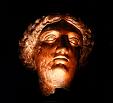Cooperation
Ученые ИЯИ РАН сотрудничают со многими ведущими лабораториями, институтами и университетами мира, принимают активное участие в работе целого ряда крупных международных экспериментов в ЦЕРН (Швейцария), ОИЯИ (Россия), Германии, Японии, Италии, США, Китае, Франции, Испании и других стран.
В ИЯИ РАН разработана ускоряющая структура, использующаяся при создании ускорителей J-PARK в Японии и PITZ в центре DESY в Германии. Разработанный в ИЯИ РАН монитор формы сгустков установлен во всех ведущих международных ускорительных центрах, включая SSC, CERN, DESY, KEK, J-PARK, SNS, LANSCE, FRIB, GSI, ESS и ОИЯИ. Получены новые экспериментальные данные по ядерным реакциям с участием протонов и нейтронов средних энергий, по фотоядерным реакциям, в том числе исследована спиновая структура протона с помощью активной поляризованной мишени, проведены наблюдения новых эффектов при столкновениях релятивистских ядер, дано начало новому научному направлению, получившему название «ядерная фотоника».

The evidence of the neutrino oscillations was discovered by the study of atmospheric neutrinos in 1998. In 1999, an accelerator based experiment was started to study this phenomena. This experiment is called the KEK to Kamioka long baseline neutrino oscillation experiment (K2K). The neutrinos are artificially generated by using the proton accelerator at KEK and observed in the Super-Kamiokande detector located 250km away from KEK.
This experiment was completed in Nov. 2004. As a result, 112 neutrino events are observed in Super-Kamiokande, while the expected number of events without oscillations is 158. The probability to observe the deficit without neutrino oscillations is estimated to be 0.0015% and this deficit confirms the prediction of the neutrino oscillation discovered by the observation of atmospheric neutrinos.

The beam is measured once before it leaves the J-PARC site, using the near detector ND280, and again at Super-K: the change in the measured intensity and composition of the beam is used to provide information on the properties of neutrinos.
Science Goals of T2K
•the discovery of νμ → νe ( i.e. the confirmation that θ13 > 0 )
•precision measurements of oscillation parameters in νμ disappearance
•a search for sterile components in νμ disappearance by observation of neutral-current events
•world-leading contributions to neutrino-nucleus cross-section measurements

A beam of muon neutrinos is formed due to the interaction of protons accelerated at the accelerator at CERN (energy about 400 GeV) with nucleons of graphite target nuclei, then the produced particles (pions and kaons) are focused by a system of magnets in the indicated direction - in the direction of Gran Sasso. Pions and kaons are short-lived particles that decay on the fly in a vacuum tunnel about 1 km long at very high energies. The products of such decay are muons and neutrinos.

The observation of CP violation in the lepton sector, which in itself is a discovery, would be the experimental basis for the fundamental idea of leptogenesis, which explains the baryon asymmetry of the Universe. This experiment will also determine other oscillation parameters with high accuracy, which will make it possible to understand the difference between the mixing of quarks and leptons. Currently, the Institute’s employees take part in the installation and adjustment of the near detector, as well as on duty at the NOvA neutrino detectors. They study the background from the penetrating component of cosmic rays and develop methods for its suppression. The main activities are related to the reconstruction, identification and analysis of neutrino events at the near and far NOvA detectors and calculations of (anti)neutrino fluxes in the NuMI off-axis beam.

The experimental program includes measuring cross sections for the interaction of neutrinos with various nuclear targets in the energy range of quasi-elastic scattering, resonance production and deep inelastic scattering.
The relevance of these studies is due, first of all, to the fact that uncertainties in the cross sections for quasi-elastic and resonant interactions of neutrinos with nuclei are one of the main sources of systematic errors in accelerator oscillation experiments with distant neutrinos.
Institute employees take part in duties at the detector, process and analyze data on exclusive quasi-elastic events, as well as determine the differential cross section of this process and the axial shape factor of the nucleon.


